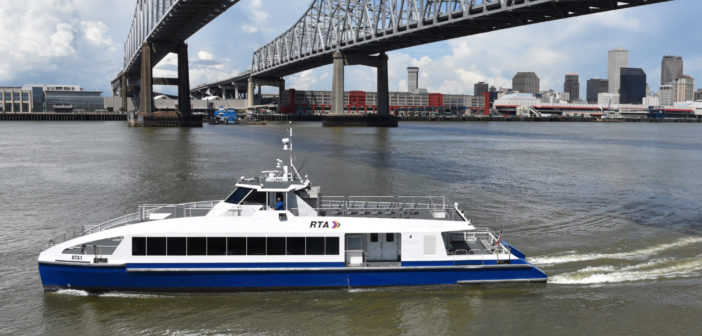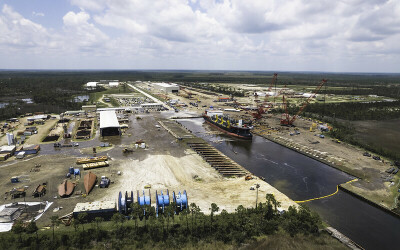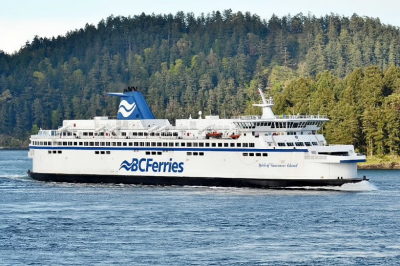In late July, the two new 105', 150-passenger catamaran ferries delivered to New Orleans in 2018 were boarded by the Coast Guard for inspection. Those inspections failed and Certificates of Inspection (COI) were not issued.
Though the new ferries, RTA 1 and RTA 2, were delivered last year by Louisiana boatbuilder Metal Shark, neither has been authorized to operate on its approximately half-mile route between the east and west banks of the Mississippi River in New Orleans.

Capt. Kristi Luttrell, Sector New Orleans commander and the Officer-in-Charge of Marine Inspection. USCG photo
Capt. Kristi Luttrell, the Coast Guard’s Sector New Orleans commander and the Officer-in-Charge of Marine Inspection (OCMI), said city officials called them requesting the routine checkup. However, when the Coast Guard team got there, the crew was not ready for the inspection.
“Until the crews can prove to us that they can respond to any incident on the river in regard to abandoning ship and safely removing people from the water, that’s what’s really holding them up,” said Luttrell. “I don’t have a complete punch list of what’s wrong, but for the most part what happened was that they didn’t have crews onboard who could prove they could safely carry passengers. That’s the gist of it.”
Following the failed inspections, members of Coast Guard Sector New Orleans and officials from Transdev North America and RTA (Regional Transit Authority) held a meeting to discuss necessary measures needed to bring the two RTA ferries into compliance with federal standards. (Transdev provides management of the city of New Orleans’ transportation modes through the RTA.)
According to published reports, however, RTA is now looking for a new ferry operator. “The boats are really beautiful. No one looks forward to having those vessels on the river more than me,” said Luttrell. “We’ll get then there. They’ll get them there. I’m confident of that. They’ll get their COIs.”
Josh Stickles, Metal Shark’s vice president, marketing, in an earlier interview with WorkBoat, said, “Both RTA 1 and RTA 2 were inspected by the USCG in Morgan City (La.) prior to delivery. Both vessels passed the inspections without incident and were issued Certificates of Inspection,” he said. “In addition to being accepted by the RTA with Metal Shark’s portion of the USCG inspection complete, both vessels recently passed inspection by an independent marine surveyor jointly retained by Metal Shark and the RTA. The certifications issued in connection with those inspections are matters of public record.”
Luttrell said those COIs were only good for transporting the boats from Morgan City to New Orleans. “Those were temporary transit COIs. There were no passengers onboard,” she said. “They need a COI that proves they can operate here on the river as a passenger vessel.”
The ferries were designed by BMT and built to meet the specific requirements of the RTA. The Subchapter T boats are powered by twin 715-hp Caterpillar C-18 Tier 3 diesel engines and feature a proven, low wake/low wash, high efficiency hull design for reduced environmental impact.
RTA recently hired Alex Wiggins as its new CEO. “We have recently had a positive and productive meeting with one member of the RTA's new management team, Alex Wiggins, the RTA’s recently-hired CEO,” said Stickles. “Metal Shark is optimistic that under Mr. Wiggins’s new leadership, the RTA will finally take the proper action to ensure that their ferries are placed into service promptly.”
Luttrell said there is no date for the next inspection, as of now. “We told them to call us when you’re ready for the next inspection,” she said. “Those boats are state of the art. We’re going to get there.”





